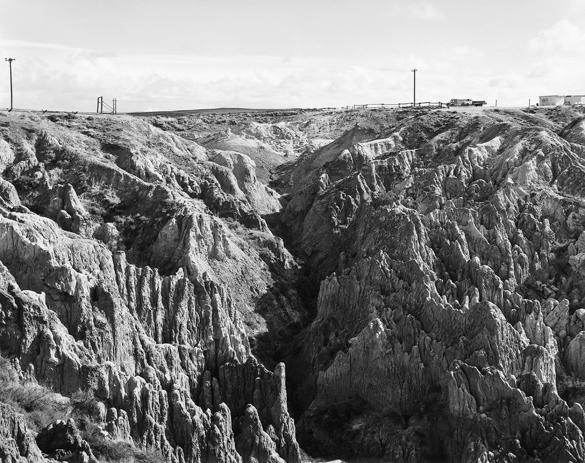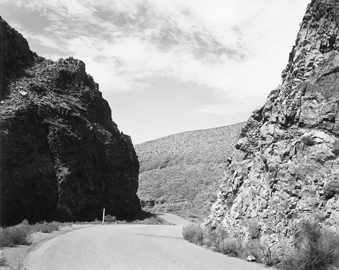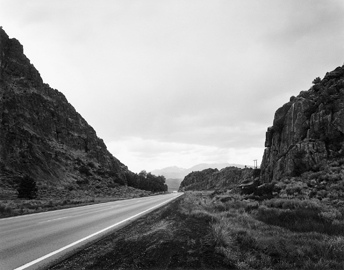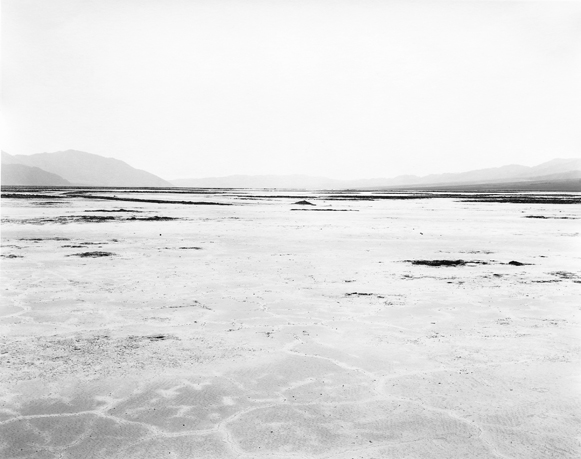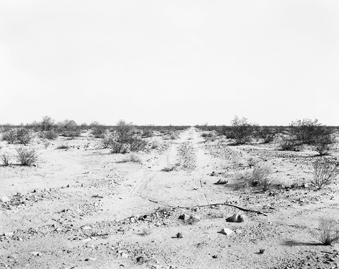[Summer 1998]
by Mark Ruwedel
Once, from eastern ocean to western ocean, the land stretched away without names. Nameless headlands split the surf; nameless lakes reflected nameless mountains; and nameless rivers flowed through nameless valleys into nameless bays. — George R. Stewart, Names on the Land1
Devil’s Garden. The Devil’s Playground. The Devil’s Corral. Devil’s Cornfield. Homestead. Slide. Hole. Throat. Speedway. Devil Ridge. Hell’s Gate. Hell’s Half Acre. The Dirty Devil River. El Rio de las Aminas Perdidas en Purgatorio. El Camino del Diablo. My atlas shows a spot in the Mojave Desert of California named, simply, Hell. I have visited eight different Devils Gates (and three Hells Gates); four in the state of Nevada. George R. Stewart wrote, “However profane he might be in speech, the American did not apply the name of God to places. When he wished to give any idea of the supernatural, he resorted to the Devil. If the Sioux wacan indicated that a body of water was spirit-haunted, the American usually translated it as Devil’s Lake. When he saw a mass of columnar basalt so gigantic as to suggest more than human power, it became the Devil’s Postpile.”2
The American West in particular is rich with the name of the Devil. Some of these places were named at least half-humorously: Hell n Maria Canyon in Utah, or the California Gold Rush camp known as “Hell-out-for-Noon City.” Others perhaps reflect the peevishness of early explorers, or the whimsy of early tourists or the National Parks Service: The Devil’s Golf Course and Devil’s Speedway in Death Valley. Still others refer to catastrophe: “The River of Lost Souls in Purgatory,” in southeastern Colorado, was named for a group of Spanish explorers who, in 1594, became lost, quarrelled, and finally died or killed each other in that remote location. (Years later, French trappers called it the “Purgatoire”; American cowboys followed with “Picketwire.”) The main road from Mexico to the California gold fields was known to Mexicans as “El Camino del Diablo”; Americans called it the “Trail of Graves.” As my friend (and collaborator on this project) Terry Toedtemeier has made clear in his research, the Devil owns more real estate in Oregon than most anywhere else: Devils Flat, Devils Hole, Devils Garden, Hellgate, Hell’s Canyon, Devils Punchbowl, Devil’s Elbow, Devils Lake, and another Devils Gate.
Place names evoking Satan and his minions suggest a dominant attitude on the part of settlers of European origin toward the “New World,” and it is no coincidence that the less the land resembles Europe, as one moves from east to west, the more the name of the Devil appears. Arid lands in particular carry these names. Desert lands were (and still are) seen as desolate wilderness, and in the Judeo-Christian tradition wilderness is cursed; it is the land of fear, populated with demons. Roderick Nash, in Wilderness and the American Mind, noted, “The identification of the arid wasteland with God’s curse led to the conviction that wilderness was the environment of evil, a kind of hell.”3 It was in an arid wilderness that Christ was tempted by Satan. The Pilgrims in New England often described North America as the last stronghold of the Devil (and, by extension, considered native peoples as being the Devil’s own). Cotton Mather wrote, “The New Englanders are a People of God settled in those which were once the Devil’s Territories.”4
The farther out from the Anglo-European homeland, the more distorted and fictional the shapes of the world became, for beyond geography as mapped there was nothing recognizable. Mapping . . . is psychic as well as spatial, and the Western tendency was to consider terra incognitas as either empty or demonic. 5
These places, named for the Devil by Euro-American explorers and settlers, already had, of course, other names, names given by aboriginal peoples over the past ten thousand years. Naming implies power, and by giving new names, whether Dirty Devil or St. Augustine, the Europeans took possession and denied the existence of indigenous cultures. Naming was the symbolic ending of one history and the beginning of another. In Savage Dreams, Rebecca Solnit writes that, in naming, the European transformed himself “from an invader or immigrant into a discoverer, making the place new, making a beginning. “The Western explorers . . . thought of the land they arrived in as new in the absolute sense, rather than new to them; a place waiting for them to invent rather than a place they needed to learn.”6
Death Valley has been given more than its share of foreboding place names. From Dante’s View in the Black Mountains, one can look out onto the Devil’s Golf Course and the Devil’s Speedway. From viewpoints in the Funeral Mountains, one can see the Devils Cornfield. Near the Golf Course is Mushroom Rock, a stool-like formation that was once called the Devil’s Throne. This throne would have made a good perch from which to watch Erich von Stroheim torture the cast and crew of “Greed” as he filmed the final scenes on the Devil’s Golf Course in July and August of 1923. Von Stroheim’s actors were not the first whites to have a miserable time in Death Valley. In 1849, several parties of emigrants bound for California entered the valley and had a hard time getting out, running out of food and water; they were the ones who christened the place “Death Valley.” William Manly, a leader of the emigrants, later described Death Valley as “a corner of the earth so dreary that it requires an exercise of the strongest faith to believe that the great Creator ever smiled upon it as a portion of his work and pronounced it “very good.”7 At the same time, what we think of as “Death Valley” was (and still is) the home of a band of Western Shoshone. In 1994, in response to a long-running conflict with the National Parks Service, they published a pamphlet called “The Timbisha Shoshone Tribe and Their Living Valley.” In it, the authors note, “Before outsiders changed our valley, it was described in the names of the places that were important for our survival here. Many are the names of springs. If the Manly Party, who travelled across our valley in 1849, had known our stories and trails, they would have found water, and Tumpisa might not be known as a Valley of Death.”8
“Why is it that the whites moved through the west leaving behind them a trail of place names that disrespect the land?” a Navajo man at a gas station said. I asked him to explain. “I don’t have to explain, look at a map.” There they were: Devil’s Bridge, Hell’s Backbone, Purgatory, Nothing. — Melanie McGrath, Motel Nirvana.9
1 G.R. Stewart, Names on the Land (New York: Random House, 1945), p. 3.
2 Ibid., p. 316.
3 R. Nash, Wilderness and the American Mind (New Haven: Yale University Press, 1967), p. 14.
4 F. Turner, Beyond Geography: The Western Spirit against the Wilderness (New Brunswick, NJ: Rutgers University Press,
1983), p. 227.
5 Ibid., p. 95.
6 R. Solnit, Savage Dreams (San Francisco: Sierra Club Books, 1994), pp. 309, 320.
7 P. Limerick, Desert Passages (Albuquerque: University of New Mexico Press, 1985), p. 55.
8 V. Kuletz, The Tainted Desert (New York: Routledge, 1998), p. 213.
9. M. McGrath, Motel Nirvana (New York: Picador, 1995), p. 198.

